With years spent reading single issues here and there, juggling storylines of dozens of titles, I decided it was time to find a better way to read comics. So, it was off to the back issue bins armed with the longest want list you’ve ever seen! Putting together series after series and reading them in their complete goodness, I was reborn as the Retro-Reader!
 Publisher: Marvel Comics
Publisher: Marvel Comics
Number of Issues: 9
First Issue: May 1972 (20¢)
Last Issue: September 1973 (20¢)
Writer: Gary Friedrich (#1 & 9), Gardner Fox (#2-8),
Artist: Syd Shores (#1-8), Dick Ayers
*Warning! Plot Spoilers Below*
The masked avenger of the western plains is certainly a complex hero. His Native American parents were killed by white men when he was young. Later, Native Americans killed his adoptive parents! Now a grown man living in the 1800s, Johnny Wakely walks a fine line between “red man” and “white man”. Possessed of the blessing of Wakan Tanka, the Cheyenne Nation’s Great Spirit, armed with the coup stick, garbed in a wolf headdress and assisted by Lobo (his wolf sidekick), he is called upon to be his generation’s living embodiment of Owayodata – the Red Wolf!
Wakely lives on Fort Rango, a U.S. Army base run by Colonel Sabre. And, while the Colonel is friendly towards men of all color, many of the others who live on the base aren’t as accepting of Native Americans. As you can imagine, tensions continue to flare between the white men on the Army base and the surrounding villages of Native Americans. These situations are continually calmed by Red Wolf – he’s dedicated his life towards improving relations between both races. In addition to squelching racial conflicts, Red Wolf occasionally gets pitted against other unique individuals like Ursa (a Native American raised by bears) and the Devil Rider (a glowing, masked bandit).
 As of the seventh issue, the series switched focus to the Red Wolf of the 1970s, a descendant of Wakely. With similar weapons and abilities, this Red Wolf is a costumed crime-fighter and adventurer based out of Phoenix, Arizona. He’s also got a wolf sidekick named Lobo and while the first Red Wolf worked hard to remain unattached – this Red Wolf has a policewoman girl friend named Jill Tomahawk of the Mohawks.
As of the seventh issue, the series switched focus to the Red Wolf of the 1970s, a descendant of Wakely. With similar weapons and abilities, this Red Wolf is a costumed crime-fighter and adventurer based out of Phoenix, Arizona. He’s also got a wolf sidekick named Lobo and while the first Red Wolf worked hard to remain unattached – this Red Wolf has a policewoman girl friend named Jill Tomahawk of the Mohawks.
The Bad: The last three issues are exceptionally bad comics.
the Good: The first six issues put a unique spin on the concept of Western comics – the Native American as the hero!
The Verdict: It’s strange for a book to shift focus as severely as this did. In one issue, we got a new protagonist and the timeframe it was set within jumped a whole century forward!
I suppose the original concept, while unique, was doomed to fail. Y’see, the Red Wolf of the 1800s put himself in the position of improving relations between Native Americans and the white men. But, we all know how that really turned out – that’s a problem with historical fiction. And, despite the neat spin on the Western concept, the stories weren’t all that great. Adding to the drama, a love triangle between Red Wolf, Molly Brennan (the white girl whose parents were killed by Native Americans) and Fawn (of the Cheyenne camp) was developing – but Red Wolf felt that he was fated to remain single so he could dedicate his life entirely to his cause. I think I would have enjoyed it more if they focused on developing some of the characters inside the Fort and created racial tensions from them. This would have put an ongoing face to the problem instead of the “new-threat-of-the-latest-issue” that the one-and-done story format utilized. However, as mediocre as the first six issues were – the last three were terrible.
 As I mentioned earlier, the final three issues changed centuries and protagonists. This Red Wolf didn’t have much of a direction to set him apart from other, more popular and established super-heroes. The writer did very little to establish what being a minority super hero could mean in the 1970s and beyond that, the stories (and the dialogue!) were just poorly executed. At one point, he and Lobo are sneaking into a house and he’s shouting … shouting! … about how they’re supposed to be quiet so they don’t alarm anyone. Even worse: the new direction was heralded as “Now! Set in the Holocaust of Today!” Really? Daily life in the 1970s was being described as a holocaust [def: great destruction or loss of life]? How extremely overdramatic!
As I mentioned earlier, the final three issues changed centuries and protagonists. This Red Wolf didn’t have much of a direction to set him apart from other, more popular and established super-heroes. The writer did very little to establish what being a minority super hero could mean in the 1970s and beyond that, the stories (and the dialogue!) were just poorly executed. At one point, he and Lobo are sneaking into a house and he’s shouting … shouting! … about how they’re supposed to be quiet so they don’t alarm anyone. Even worse: the new direction was heralded as “Now! Set in the Holocaust of Today!” Really? Daily life in the 1970s was being described as a holocaust [def: great destruction or loss of life]? How extremely overdramatic!
But, wait! There’s more! For continuity-freaks like myself, this’ll really get you going. There’s already a modern-age Red Wolf. His name was William Talltrees and he debuted in Avengers #81 (1970). However, Red Wolf #9 reveals that this hero’s name is Thomas Thunderhead and it asserts that he’s from the Sioux. But … wait a minute. It also says he’s a descendant of the original Red Wolf, a Cheyenne. Something’s not adding up here. Now, it should be noted that #9 was written by Gary Friedrich (who wasn’t the regular writer) and, it appears that he didn’t really do his homework (although, it’s not like there was all that much research to be done – he’d only made a handful of appearances prior to this issue). So, I think it’s just best to pretend that these last three issues and the Thunderhead version of Red Wolf never existed.

On Ebay: Red Wolf | Gardner Fox
On AtomicAvenue: Red Wolf

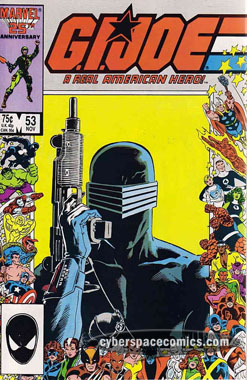
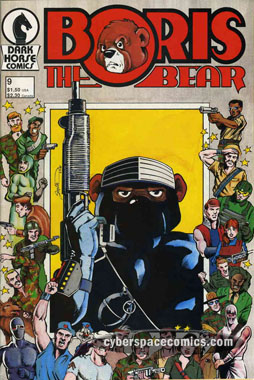
 Publisher:
Publisher: 

 Publisher:
Publisher:  As of the seventh issue, the series switched focus to the Red Wolf of the 1970s, a descendant of Wakely. With similar weapons and abilities, this Red Wolf is a costumed crime-fighter and adventurer based out of Phoenix, Arizona. He’s also got a wolf sidekick named Lobo and while the first Red Wolf worked hard to remain unattached – this Red Wolf has a policewoman girl friend named Jill Tomahawk of the Mohawks.
As of the seventh issue, the series switched focus to the Red Wolf of the 1970s, a descendant of Wakely. With similar weapons and abilities, this Red Wolf is a costumed crime-fighter and adventurer based out of Phoenix, Arizona. He’s also got a wolf sidekick named Lobo and while the first Red Wolf worked hard to remain unattached – this Red Wolf has a policewoman girl friend named Jill Tomahawk of the Mohawks. As I mentioned earlier, the final three issues changed centuries and protagonists. This Red Wolf didn’t have much of a direction to set him apart from other, more popular and established super-heroes. The writer did very little to establish what being a minority super hero could mean in the 1970s and beyond that, the stories (and the dialogue!) were just poorly executed. At one point, he and Lobo are sneaking into a house and he’s shouting … shouting! … about how they’re supposed to be quiet so they don’t alarm anyone. Even worse: the new direction was heralded as “Now! Set in the Holocaust of Today!” Really? Daily life in the 1970s was being described as a holocaust [def: great destruction or loss of life]? How extremely overdramatic!
As I mentioned earlier, the final three issues changed centuries and protagonists. This Red Wolf didn’t have much of a direction to set him apart from other, more popular and established super-heroes. The writer did very little to establish what being a minority super hero could mean in the 1970s and beyond that, the stories (and the dialogue!) were just poorly executed. At one point, he and Lobo are sneaking into a house and he’s shouting … shouting! … about how they’re supposed to be quiet so they don’t alarm anyone. Even worse: the new direction was heralded as “Now! Set in the Holocaust of Today!” Really? Daily life in the 1970s was being described as a holocaust [def: great destruction or loss of life]? How extremely overdramatic!

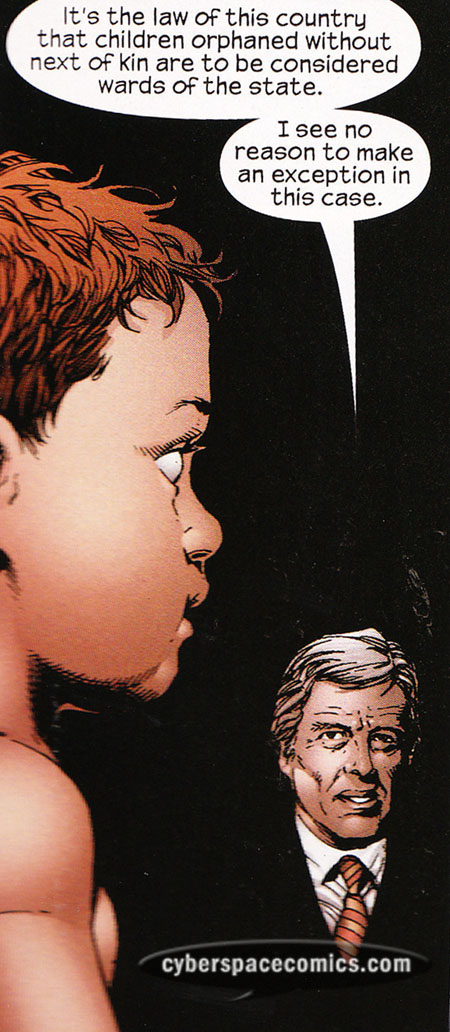
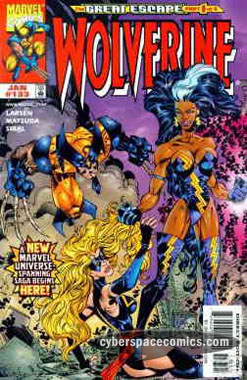
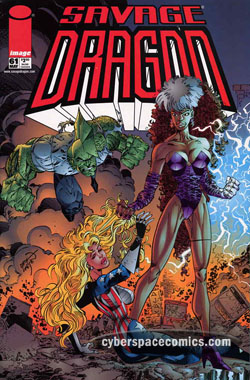
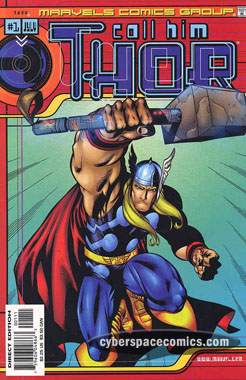 Publisher:
Publisher: 
